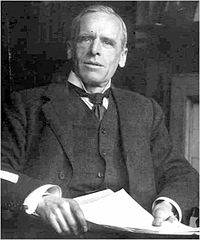Ernest Starling Scientist
Ernest Henry Starling (17 April 1866 – 2 May 1927) was an English physiologist. He worked mainly at University College London, although he also worked for many years in Germany and France. His main collaborator in London was his brother-in-law, Sir William Maddock Bayliss.Starling is most famous for developing the "Frank–Starling law of the heart", presented in 1915 and modified in 1919. He is also known for his involvement along with Bayliss in the Brown Dog affair, a controversy relating to vivisection. In 1891, when he was 25, Starling married Florence Amelia Wooldridge, the widow of Leonard Charles Wooldridge, who had been his physiology teacher at Guy's and died at the age of 32. She was a great support to Starling as a sounding board, secretary, and manager of his affairs as well as mother of their four children.Other major contributions to physiology were: The Starling equation, describing fluid shifts in the body (1896) The discovery of peristalsis, with Bayliss The discovery of secretin, the first hormone, with Bayliss (1902) and the introduction of the concept of hormones (1905) The discovery that the distal convoluted tubule of the kidney reabsorbs water and various electrolytesStarling was elected fellow of the Royal Society in 1899.Two of his great-grandchildren, Boris Starling (b. 1969) and Belinda Starling (1972–2006) are writers.
